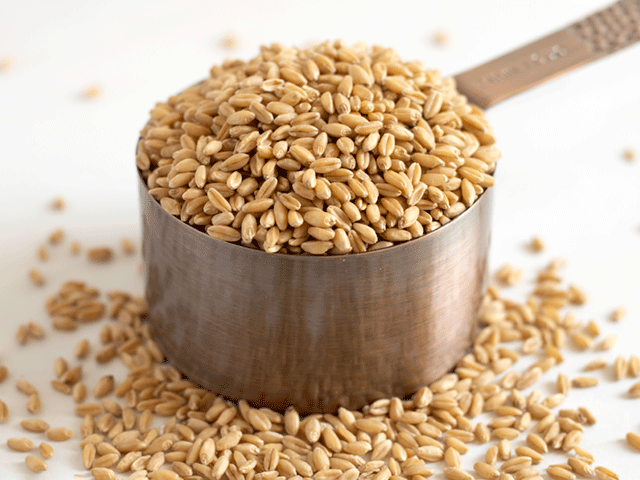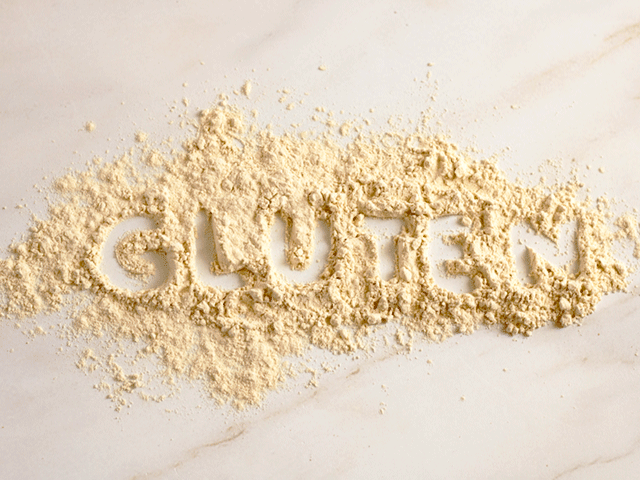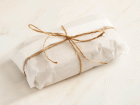
Gluten gets a lot of negative attention these days thanks to the dieting industry. Many influencers claim that by eliminating gluten from the foods you eat, you can boost your energy levels and maintain a healthy weight.
But is gluten really that bad? How does gluten actually affect you? And should you remove it from your baking?
Let’s take a closer look at this guide to gluten to answer some of the most commonly asked questions by beginning bakers.
What Is Gluten?
Gluten is a catch-all term for storage proteins found in certain grains, specifically wheat, rye, barley, and triticale. These naturally occurring proteins like to stick together, creating a structural network similar to glue. In baking, gluten gives dough its stretchy, elastic texture, and it traps gasses and moisture to give bread its soft, distinctive chew.
What Is Vital Wheat Gluten?
If you’ve browsed some of my recipes, you may have noticed that a few recipes call for high-protein bread flour or a combination of vital wheat gluten and all-purpose flour.
Vital wheat gluten is a powdered form of gluten that many bakers use as an additive to increase flour’s protein content. If you’re making an artisan-style sourdough loaf, the extra gluten can improve your dough’s stability and structure, making it easier to shape.
Is Gluten Bad for You?
The human body uses enzymes to break down consumed proteins such as gluten, though it doesn’t break down gluten completely. For some people, the undigested gluten triggers an autoimmune response when it reaches the small intestine, resulting in unpleasant symptoms such as bloating, diarrhea, headaches, and even rashes.
However, for the rest of us, undigested gluten poses no risk, and gluten itself is a reliable source of protein and fiber. Furthermore, going gluten-free does not guarantee any weight loss benefits on its own. Many gluten-free processed foods rely on starches to hold and stabilize food as a substitute for gluten. These starches can actually raise blood sugar levels and cause weight gain rather than being the advertised cure-all.
For an in-depth guide to gluten and its effects on the body, check out this article at Harvard School of Public Health.
Which Flours Have the Most Gluten?

Now that you understand what gluten is, it’s time to use it to your advantage. As a baker, it’s important to understand which flours have the highest amount of gluten so you can achieve the ideal texture for your bread. If you’re using a lower-protein flour like all-purpose, then you’ll need a guide to gluten percentages to determine just how much vital wheat gluten you need to add.
If you were to take 1 cup of your favorite flour, here’s the amount of protein by weight it would have:
| Flour Name | Total Protein | Estimated Gluten % | Estimated Gluten |
| Bread Flour | 30 Grams | 12-14% | 3.6 Grams |
| Semolina Flour | 21 Grams | 12-13% | 2.5 Grams |
| 00 Flour | 15 Grams | 10-12% | 1.5 Grams |
| All-Purpose Flour | 16 Grams | 10-12% | 1.6 Grams |
| Whole Wheat Flour | 16 Grams | 9-12% | 1.4 Grams |
| Einkorn Flour | 13 Grams | 9-12% | 1.1 Grams |
| Spelt Flour | 10 Grams | 9-11% | 0.9 Grams |
| Self-Rising Flour | 12 Grams | 8-9% | 0.9 Grams |
| Barley Flour | 12 Grams | 8-10% | 0.9 Grams |
| Rye Flour | 11 Grams | 7-9% | 0.7 Grams |
| Cake Flour | 8 Grams | 7-8% | 0.5 Grams |
Keep in mind that these are estimates only. Different brands of flour offer different protein percentages. If you’re not sure how much protein is in the flour you have at home, take a quick peek at the nutritional information on the bag.
Additionally, you should note that not all flour proteins are gluten specifically. Wheat flour, for example, contains albumins, globulins, gliadins, and glutenins. Gliadins and glutenins are categorized as gluten, as they are storage proteins that don’t always digest. Albumins and globulins, however, are water soluble metabolic proteins.
Which Flours Are Gluten Free?
If you are gluten-sensitive, allergic to gluten, have Celiac’s disease, you don’t have to stop baking altogether. You can opt for these gluten-free flours whenever you want to make bread:
- Almond Flour
- Chickpea Flour
- Corn Flour
- Oat Flour
- Rice Flour
Of course, you will want to be wary about how your flours were manufactured. Oat flours and chickpea flours may cross contaminate with other flours if they were processed in the same facility. Check the label to ensure that your gluten-free flour is truly gluten free.
Want to Know More?
Gluten plays an important role in baking, and I hope this guide to gluten can help clear up any confusion regarding its use. If you have further questions, don’t hesitate to ask in the comment section below, and I’ll do my best to answer.



